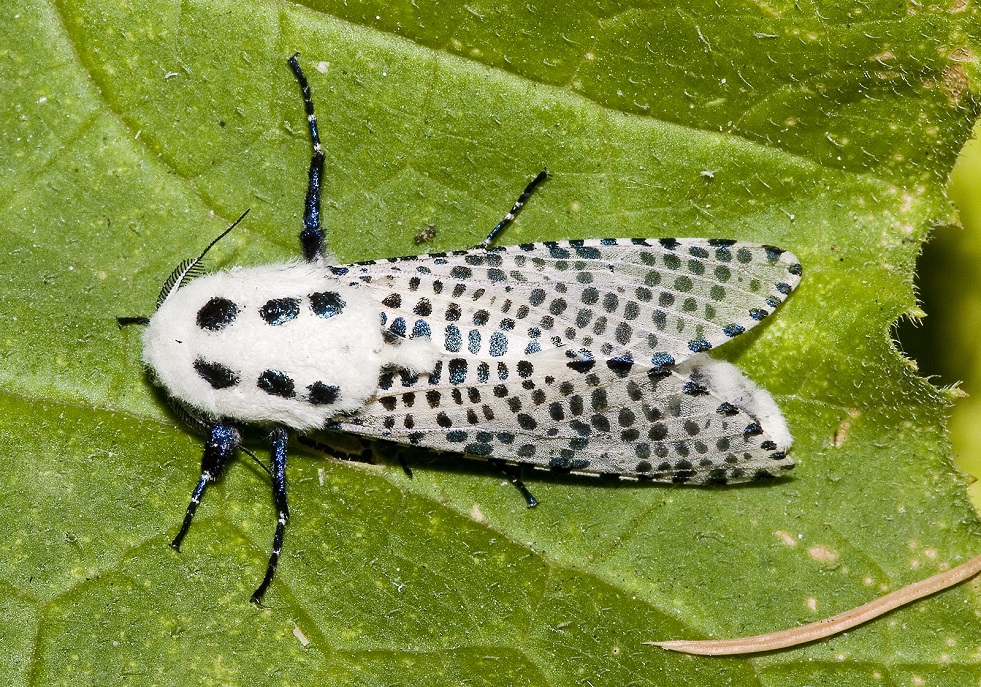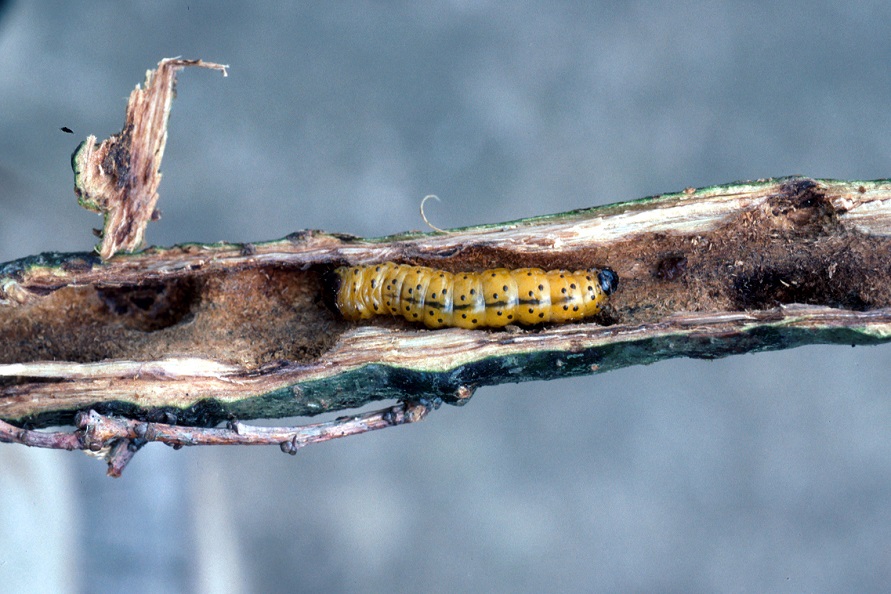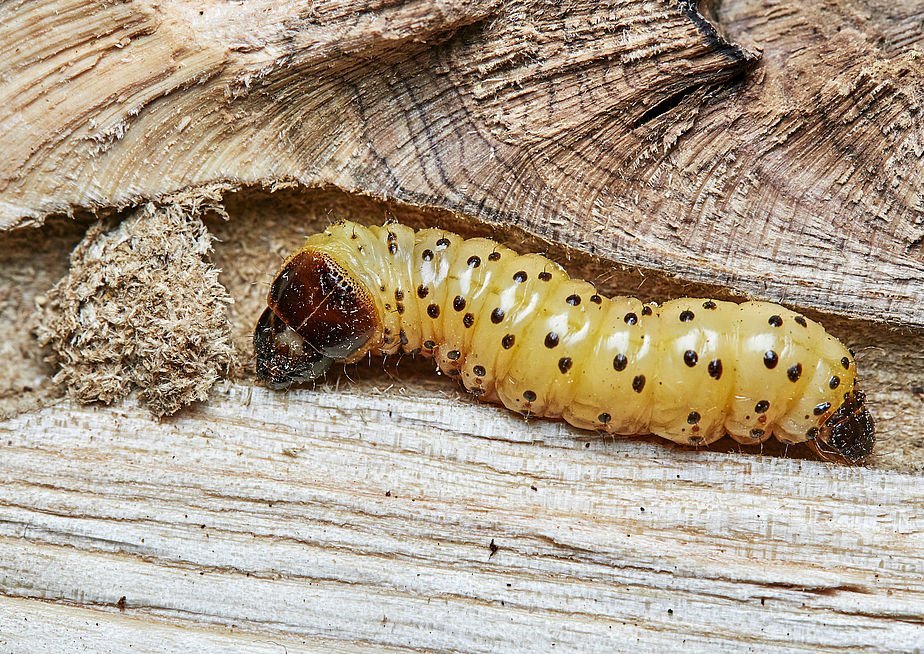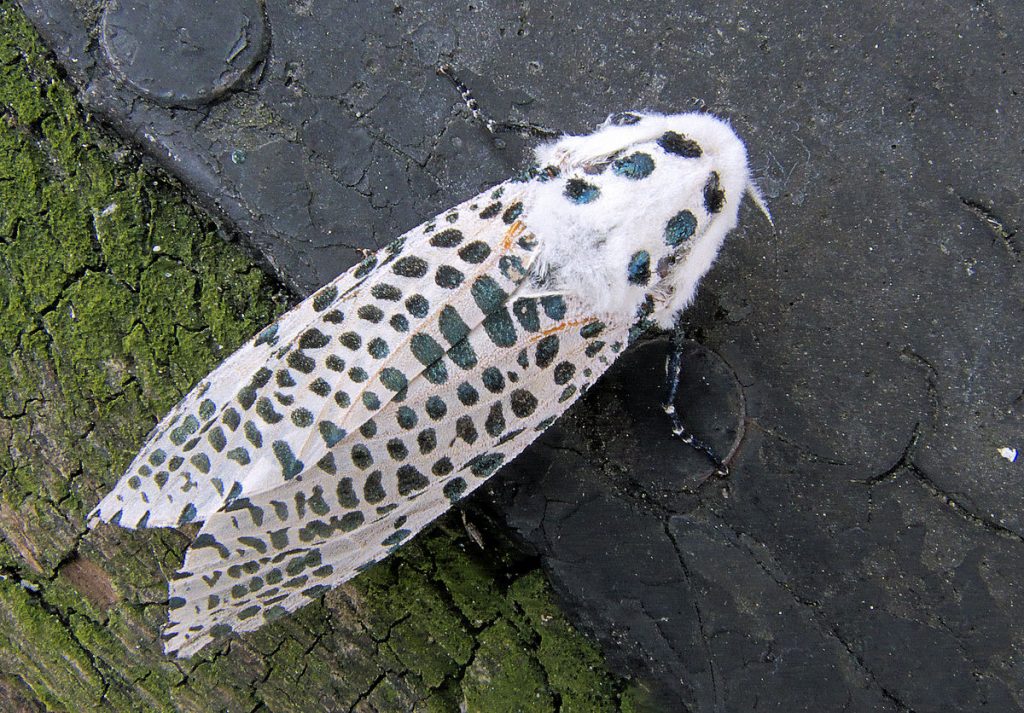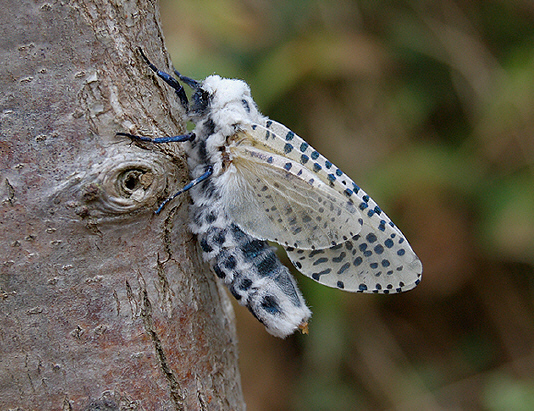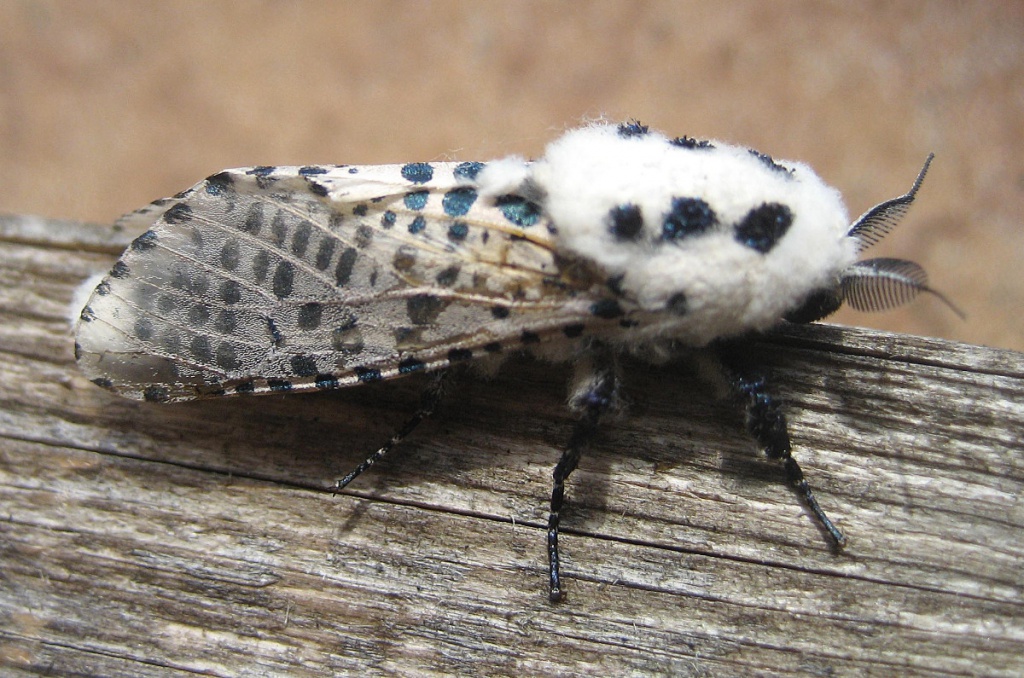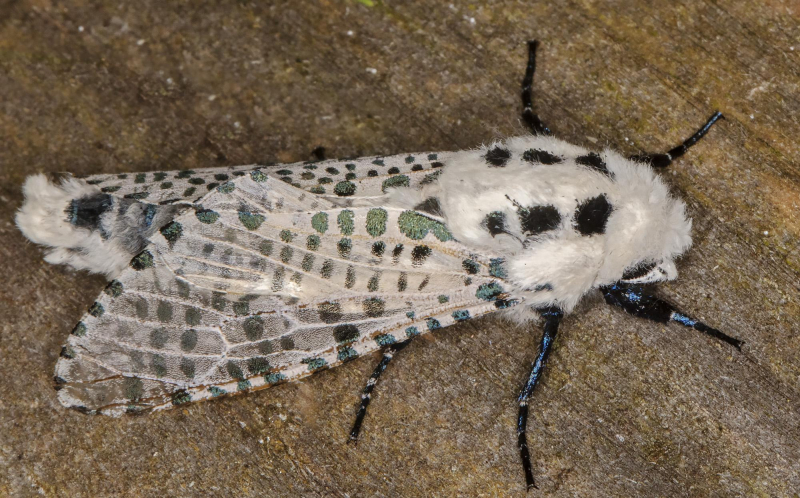Leopard Moth(Zeuzera pyrina)
Leopard moth of the Cossidae family is indigenous to Europe, northern Africa, and Asia. Its introduction in the United States occurred a little before 1879, particularly in the Pennsylvania, Maine, and Texas regions.
cdn.britannica.com
Scientific Classification
- Family: Cossidae
- Genus: Zeuzera
- Scientific Name: Zeuzera pyrina
Description and Identification
Caterpillar
The larva, white and fleshy, having black spots all over its body grows to about 5cm. It also has a dark-colored head capsule. It takes about 2 – 3 years to develop before it grows to a pupa.
Adult Moth
Sexual Dimorphism: Present
Color and Appearance: When opened, the forewings are white with several long, and narrow black spots. The hind wings are translucent, barring the anal region that has tiny black spots. When closed, the color is similar, a white background marked with numerous black spots.
Their other characteristic features include a white head, black forehead, white and furry thorax marked with six black spots, and a black hairy abdomen. The females are larger than their male counterparts, also having a thinner antenna.
Wingspan: 3.5 – 6 cm
Flight Pattern: Erratic
Season: June – September
Quick Facts
| Other Names | Wood leopard moth |
| Distribution | Europe (except Ireland) , northern Africa (Morocco, Libya, Egypt, Algeria), Asia (Iran, Israel, Iraq, Sri Lanka, Korea, Turkey, India, Taiwan, Lebanon, Japan, Syria), northeastern United States (Texas, Maine, Pennsylvania ) |
| Habitat | Gardens, orchards, woodland |
| Predators | Not recorded |
| Lifespan of adults | 8 – 10 days |
| Host plants | Acer, Aesculus, Amelanchier, Broussonetia, Carya, Castanea, Celtis, Ceratonia, Cotoneaster, Crataegus, Cydonia, Fagus, Fraxinus, Ilex, Juglans, Ligustrum, Liquidambar, Lonicera, Malus, Olea, Punica, Prunus, Quercus, Rhododendron, Ribes, Robinia, Rubus, Salix, Syringa, Tilia, Ulmus, Viburnum |
| Adult diets | Nectar of the host plants |
Did You Know
- Their white wings with black spots resemble a snow leopard’s coat pattern, hence their name.
- Two of its subspecies include Zeuzera pyrina biebingeri and Zeuzera pyrina pyrina.
Scientific Classification
- Family: Cossidae
- Genus: Zeuzera
- Scientific Name: Zeuzera pyrina

